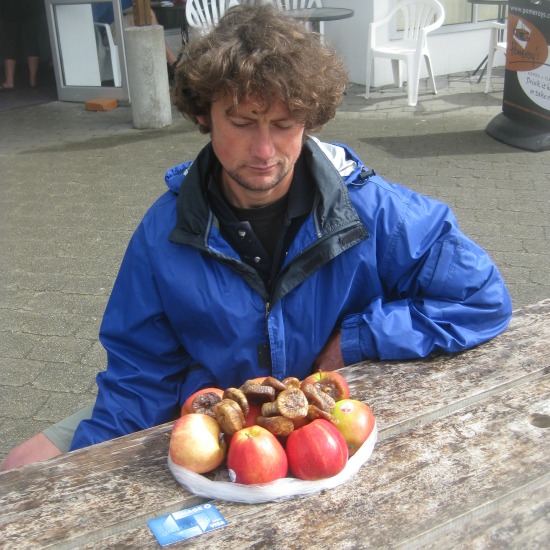New Zealand and Other Travel Locales That Will Break the Bank
New Zealand is worth visiting, but I’m not sure how long I can keep traveling here while claiming to be “on the cheap”
/https://tf-cmsv2-smithsonianmag-media.s3.amazonaws.com/filer/20120112111046StoneFruitsExpensiveSMALL.jpg)
It’s rare that a place is entirely worth visiting simply because it’s cheap. Consider the Republic of Georgia, where one could live on five bucks a day but where the mud streets, drab Soviet food and often bland villages may fall short of inspiring the traveler (though the tremendous hospitality and mountainous scenery can easily win hearts). Likewise, it may not be a winning scheme to entirely dodge a nation because prices there are through the roof. Consider New Zealand, where the superb landscape is like the backdrop of a fantasy filmmaker‘s dreams but where a quick stop at a grocery store can easily pull 50 bucks from your pocket. Yes: New Zealand is worth visiting. But I’ll be frank: I’m not sure how long I can keep traveling here and continue claiming to be “on the cheap.”
All of which has got me thinking: What are the world’s most expensive places? And which are the cheapest? Where should the frugal traveler go? And at what point is beauty simply not worth its price? And so I’ve spent a few hours between trout streams researching the matter, considering first-hand accounts, travel blogs, my own experience and a few critical criteria, like the retail cost of a cup of coffee, the cost of a pint of beer and the price of a hostel as indicators. And here they are, in no particular order, a few of the world’s most expensive travel destinations—plus a smattering of low-priced alternatives (all dollar prices are in $USD):
Japan. According to an August 2011 article in BootsnAll, “$60-$75 /day is about the bare minimum you’ll need to travel around Japan.” And that doesn’t include eating, sightseeing and living with some degree of comfort, which can all jack the cost up to an easy $100 per day. And this site tells us that traveling Japan can cost more than $200 per day.
Switzerland. Trim, tidy and exorbitant, Switzerland is home to rustic mountain hamlets as well as some of Europe’s slickest cities. Among them, Geneva and Zurich are said to be the most expensive in the world. BootsnAll reports that one “can spend $100-$125/day with relative ease in Switzerland.”
Iceland. Like many remote island nations largely incapable of growing much of their own food but intent on keeping pace with the modern world, Iceland is a real pocket picker. Travelers here can say goodbye to $100 to 120 per day if they choose to sleep indoors and eat well. What I think? Fishing for salmon and camping out among the ice, tundra and lava might help cut costs.
Norway. Another modern place in a sub-Arctic world, Norway is a land where people pay for their comforts, as do their visitors. One hundred dollars, according to BootsnAll, is said to be an average daily price of life. Just one latte, for instance, may cost $6.80.
Greenland. Far north, isolated and thirsty for the simple comforts we know, Greenlanders must pay more than seven pounds for a beer. That’s almost 11 bucks. Don’t forget to tip.
Moscow. This report may be dated, but in 2008, a cup of coffee here reportedly ran, on average, $10.19. At the same time, Parisian coffees were going $6.77 and Athenian coffees $6.62. (In Buenos Aires, coffee was going $2.03 per cup.)

The author can't decide: Was this handful of apples and dried figs worth 17 New Zealand dollars? Photo by Andrew Bland.
New Zealand. I report this from my own experience. While this nation is not the most expensive on the list (my brother Andrew got by here last year on $60 per day), it is far from cheap. Today, for instance, our eyes bugged out at a roadside fruit stand where we found fresh apricots going for the equivalent of $14 per pound. And yesterday, I spent $15 on nine apples and a scraping of dried figs from the bulk section in a supermarket in Te Anau. What other groceries here will almost kill you? Garlic, which can run the equivalent of $10 or $12 per pound. And that oldest, most vulgar staple of the peasant, the onion, can run about $2 apiece. Yet avocados go as cheap as two for a buck, thanks to an industry on the North Island.
How to save money on the road? BootsnAll suggests using hostel kitchens to cook your own meals, taking advantage of free breakfasts and camping—but read between the lines! Some of these well-meant suggestions will work against you. The “free breakfast” offering? That requires a hotel room, the surest means of parting with your money. And hostels aren’t always particularly cheap, often running $30 or more. Camping? More my style, except that BootsnAll suggests sleeping in proper campgrounds, which as often as not resemble RV parks in places like Europe and New Zealand and which, in places like Croatia, can cost even a lone cyclist $25 for a patch of dust on which to lay a sleeping bag.
My own advice for nomads on the cheap: Ride a bicycle. Forage roadside fruit, which can be delicious and healthy while cushioning your wallet until suppertime. Sleep for free—though this specific activity was made illegal last year by the New Zealand government. Finally, avoid cars if possible. These grumbling thieves demand gas, insurance, parking and repairs. They cannot be stashed out of sight behind the raspberry bushes, and the easiest place to keep them, one finds, is often in a hotel parking lot. Ka-ching.
Want to skip the extreme frugality measures and still live cheaply? Then go see Cambodia, Peru, Nicaragua, India, Portugal, Bulgaria, Romania or Bolivia.
Planning Your Next Trip?
Explore great travel deals
Smithsonian magazine participates in affiliate link advertising programs. If you purchase an item through these links, we receive a commission.
/https://tf-cmsv2-smithsonianmag-media.s3.amazonaws.com/accounts/headshot/Off-Road-alastair-bland-240.jpg)
/https://tf-cmsv2-smithsonianmag-media.s3.amazonaws.com/accounts/headshot/Off-Road-alastair-bland-240.jpg)